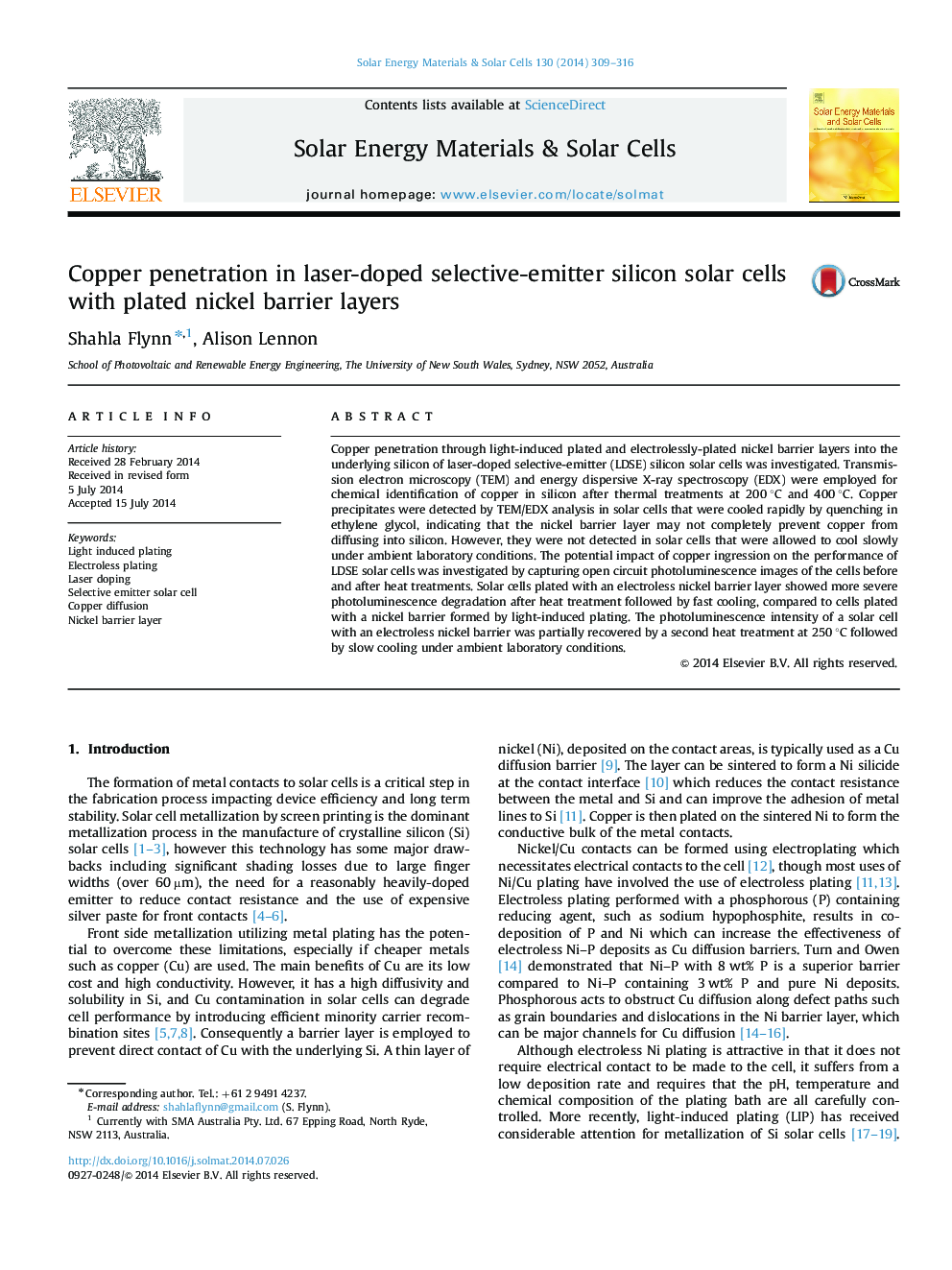| Article ID | Journal | Published Year | Pages | File Type |
|---|---|---|---|---|
| 6535571 | Solar Energy Materials and Solar Cells | 2014 | 8 Pages |
Abstract
Copper penetration through light-induced plated and electrolessly-plated nickel barrier layers into the underlying silicon of laser-doped selective-emitter (LDSE) silicon solar cells was investigated. Transmission electron microscopy (TEM) and energy dispersive X-ray spectroscopy (EDX) were employed for chemical identification of copper in silicon after thermal treatments at 200 °C and 400 °C. Copper precipitates were detected by TEM/EDX analysis in solar cells that were cooled rapidly by quenching in ethylene glycol, indicating that the nickel barrier layer may not completely prevent copper from diffusing into silicon. However, they were not detected in solar cells that were allowed to cool slowly under ambient laboratory conditions. The potential impact of copper ingression on the performance of LDSE solar cells was investigated by capturing open circuit photoluminescence images of the cells before and after heat treatments. Solar cells plated with an electroless nickel barrier layer showed more severe photoluminescence degradation after heat treatment followed by fast cooling, compared to cells plated with a nickel barrier formed by light-induced plating. The photoluminescence intensity of a solar cell with an electroless nickel barrier was partially recovered by a second heat treatment at 250 °C followed by slow cooling under ambient laboratory conditions.
Related Topics
Physical Sciences and Engineering
Chemical Engineering
Catalysis
Authors
Shahla Flynn, Alison Lennon,
